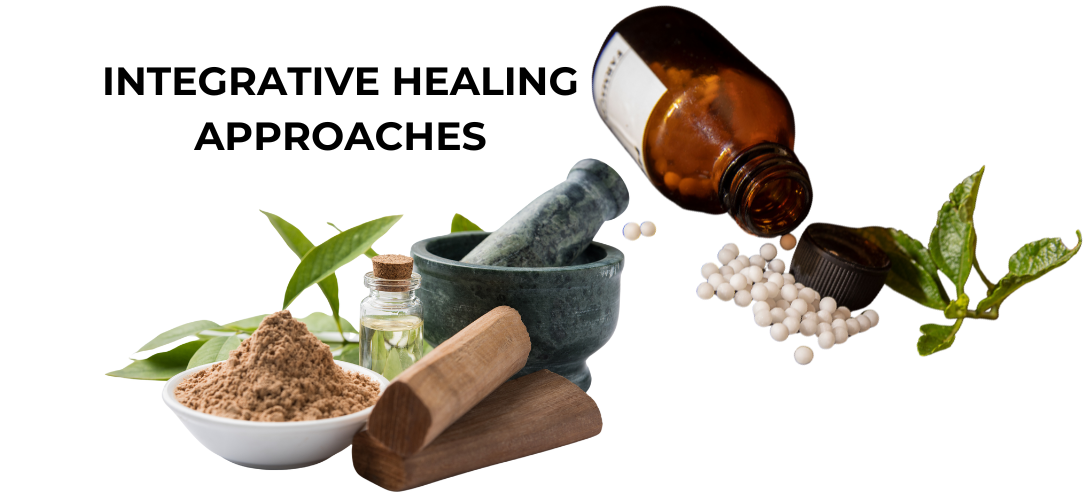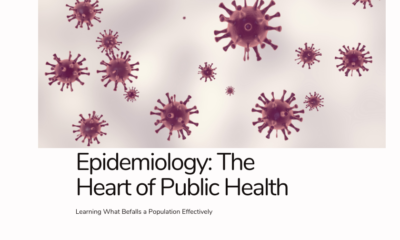Healthcare
Holistic and Alternative Medicine: Balancing Traditional and Modern Approaches

Holistic and alternative medicine represents a growing paradigm shift in how we approach healthcare. Traditionally, medicine has been practiced with an almost exclusive focus on symptoms and disease, often treating ailments in isolation from the broader context of a patient’s overall well-being. However, as scientific research and cultural awareness have progressed, there is an increasing recognition of the value found in integrating holistic and alternative healing modalities with conventional medicine. This hybrid approach aims to treat the individual as a whole, considering mental, emotional, physical, and sometimes even spiritual aspects of well-being.
The debate surrounding holistic and alternative medicine versus modern Western medicine often presents these approaches as mutually exclusive, but in reality, they can complement one another in significant ways. This article delves deeply into the history, principles, and practices of both holistic and alternative medicine, examines the growing integration with conventional medicine, and explores the potential benefits and challenges of adopting a more balanced, comprehensive approach to healthcare.
- The Foundations of Modern Medicine
Modern, conventional, or allopathic or Western medicine is based on scientific research, technology, and evidence-based practices. The development of vaccines, antibiotics, advanced surgical techniques, and sophisticated diagnostic tools has revolutionized healthcare over the last few centuries. Western medicine relies on rigorous scientific methods, large-scale clinical trials, and reproducible outcomes to ensure the efficacy and safety of treatments.
One of the core strengths of modern medicine is its ability to treat acute conditions, perform life-saving surgeries, and manage infectious diseases effectively. The pharmaceutical industry has made significant strides in the development of medications for conditions ranging from hypertension and diabetes to cancer. Additionally, advancements in medical imaging technologies, like MRI and CT scans, have improved diagnostic accuracy, leading to earlier detection and intervention for many life-threatening diseases.
Despite these advancements, modern medicine has its limitations. It is often criticized for its fragmented approach to patient care, where specialists treat individual symptoms or diseases without fully addressing the root causes or the overall health of the individual. Furthermore, reliance on pharmaceutical interventions can sometimes lead to unwanted side effects, drug dependency, or even over medication. In response to these limitations, many patients and healthcare providers have begun to explore alternative and holistic approaches to healing.
- The Holistic Approach to Health
Holistic medicine, by contrast, is an approach that seeks to treat the whole person’s mind, body, and spirit. It is based on the understanding that health is more than just the absence of disease; it is a state of optimal balance and harmony within an individual. Holistic medicine emphasizes the interconnectedness of various aspects of health, and treatment often focuses on lifestyle modifications, nutrition, stress management, and preventive care.
Holistic practitioners believe that physical symptoms are often manifestations of deeper emotional, mental, or even spiritual imbalances. As such, treatments are not solely aimed at alleviating symptoms but are designed to restore harmony to the individual as a whole. Common modalities used in holistic care include acupuncture, massage therapy, herbal medicine, chiropractic care, yoga, meditation, and naturopathy. Some practitioners also incorporate spiritual practices or energy healing techniques such as Reiki or qi gong.
At the heart of holistic medicine is the philosophy that the body has an innate ability to heal itself when given the right support. This idea of self-healing is closely tied to the concept of the vital force or life energy, which exists in many different cultural traditions, such as “qi” in Traditional Chinese Medicine (TCM) or “prana” in Ayurvedic medicine.
- Traditional Healing Systems
Many of the therapies that form the basis of holistic medicine have been used for thousands of years and are deeply rooted in traditional healing systems. These systems, such as Ayurveda, Traditional Chinese Medicine (TCM), and Native American medicine, emphasize balance, prevention, and treating the underlying causes of illness, rather than just addressing symptoms.
1. Ayurveda
Originating in India over 5,000 years ago, Ayurveda is one of the world’s oldest holistic healing systems. It is based on the belief that health and wellness depend on a delicate balance between the mind, body, and spirit. According to Ayurvedic principles, each person is born with a unique constitution, or “dosha,” which is a combination of the five elements: earth, water, fire, air, and ether. The three primary doshas Vata, Pitta, and Kapha govern different bodily functions and are responsible for an individual’s physical, emotional, and mental characteristics.
Ayurvedic treatments are highly personalized and often involve a combination of herbal remedies, diet changes, detoxification techniques, massage therapy, and lifestyle adjustments. Meditation, yoga, and breathing exercises (pranayama) are also integral components of Ayurvedic practice, as they help to balance the doshas and promote overall health.
2. Traditional Chinese Medicine (TCM)
Traditional Chinese Medicine is another ancient healing system that has been practiced for thousands of years. TCM is based on the belief that the body is a complex system of interconnected energy pathways, or meridians, through which life energy (qi) flows. When the flow of qi is blocked or out of balance, illness and disease arise.
The goal of TCM is to restore the flow of qi and maintain balance within the body. Acupuncture, herbal medicine, cupping therapy, and moxibustion (the burning of mugwort near acupuncture points) are common treatments used in TCM. Dietary therapy, tai chi, and qi gong (energy work) are also often recommended to promote overall health and well-being.
3. Native American Medicine
Indigenous healing traditions in North America vary widely among different tribes, but many share a holistic understanding of health that incorporates the mind, body, and spirit, as well as the community and the natural environment. Native American healing practices often involve the use of medicinal plants, sweat lodges, vision quests, and ceremonies such as the Sun Dance or the healing circle.
In Native American medicine, illness is often seen as a sign of imbalance with the natural world or disharmony within the community. Healing ceremonies are communal events that aim to restore balance and harmony, not only to the individual but also to the community and the environment. Shamans, or medicine men and women, often serve as intermediaries between the physical and spiritual realms, facilitating healing through prayer, song, and sacred rituals.
- The Role of Alternative Medicine
While holistic medicine focuses on the individual as a whole, alternative medicine refers to a broad range of practices and treatments that fall outside of conventional Western medicine. These practices are called “alternative” because they are used in place of standard medical treatments. However, they can also be used in conjunction with conventional medicine, in which case they are referred to as “complementary” therapies.
Alternative therapies include treatments like acupuncture, chiropractic care, homeopathy, naturopathy, and herbal medicine. Many of these therapies have historical and cultural roots, such as acupuncture’s origins in TCM or the homeopathic principles developed in 18th-century Europe by Samuel Hahnemann.
1. Acupuncture
Acupuncture is a central practice in Traditional Chinese Medicine and involves inserting fine needles into specific points on the body to restore the flow of qi and promote healing. Studies have shown that acupuncture can be effective in treating chronic pain, migraines, anxiety, and other conditions. While the exact mechanisms behind acupuncture are not fully understood, it is believed to stimulate the release of endorphins and other neurotransmitters, which help to reduce pain and promote a sense of well-being.
2. Chiropractic Care
Chiropractic care focuses on the diagnosis and treatment of mechanical disorders of the musculoskeletal system, particularly the spine. Chiropractors use hands-on spinal manipulation to correct misalignments or “subluxations,” which are thought to cause pain and interfere with the body’s ability to heal itself. Chiropractic adjustments can be effective for treating back pain, neck pain, and certain types of headaches, and they are often used as part of a broader holistic treatment plan.
3. Naturopathy
Naturopathy is a system of medicine that emphasizes the body’s innate ability to heal itself. Naturopathic doctors (NDs) use a combination of treatments, including herbal medicine, nutritional counseling, homeopathy, hydrotherapy, and lifestyle counseling. Naturopathy is rooted in the belief that the body can return to health if given the proper support through natural, non-invasive therapies and preventive care.
Naturopathic practitioners often work closely with their patients to identify underlying causes of illness and develop individualized treatment plans. They emphasize the importance of lifestyle changes such as improved diet, regular exercise, and stress management in maintaining health and preventing disease.

- Integrating Holistic and Alternative Medicine with Conventional Care
The relationship between holistic/alternative medicine and conventional care has often been characterized by tension and skepticism. However, there is a growing movement within the medical community to integrate these approaches in a complementary fashion. This integrated model, often referred to as “integrative medicine,” seeks to combine the best practices of conventional medicine with evidence-based holistic and alternative therapies.
Proponents of integrative medicine argue that this approach offers a more comprehensive view of health and wellness by addressing both the physical and emotional aspects of a patient’s condition. Integrative care also emphasizes preventive health, lifestyle modifications, and patient empowerment. Some major medical institutions, such as the Cleveland Clinic and the Mayo Clinic, now offer integrative medicine programs that include services like acupuncture, massage therapy, and mindfulness training alongside conventional medical treatments.
The key to effective integration is ensuring that alternative therapies are safe, evidence-based, and used appropriately. While some alternative treatments, such as acupuncture and chiropractic care, have been well-researched and found to be effective for certain conditions, others lack sufficient scientific evidence to support their use. For example, homeopathy remains controversial due to the highly diluted nature of its remedies and the lack of conclusive scientific data on its efficacy.
- Benefits of a Holistic and Integrative Approach
The integration of holistic, alternative, and conventional medicine offers several potential benefits:
1. Personalized Care: Holistic practitioners typically spend more time with patients, focusing on individual needs and concerns. This personalized approach can lead to more effective treatment plans that address the root causes of illness.
2. Prevention and Wellness: Holistic and alternative therapies often emphasize prevention and lifestyle changes, helping individuals maintain better health and avoid chronic diseases. Practices like yoga, meditation, and dietary modifications can support long-term wellness.
3. Reducing Reliance on Pharmaceuticals: Alternative therapies can reduce the need for pharmaceutical interventions, which often come with side effects. For example, patients with chronic pain may find relief through acupuncture or chiropractic care, potentially reducing their dependence on pain medications.
4. Mind-Body Connection: Holistic practices often recognize the role of the mind and emotions in physical health. Techniques like mindfulness, meditation, and yoga can help individuals manage stress and improve mental well-being, which in turn supports physical health.
- Challenges and Criticisms
Despite its growing popularity, the integration of holistic and alternative medicine into mainstream healthcare faces several challenges. One of the primary concerns is the lack of regulation and standardization in some alternative therapies. Unlike conventional medicine, which is subject to strict regulatory oversight, many alternative treatments are not as rigorously regulated. This can lead to inconsistencies in the quality and safety of treatments, as well as the risk of unproven or potentially harmful therapies being promoted.
Another challenge is the difficulty in obtaining insurance coverage for many holistic and alternative treatments. While some insurance providers have begun to cover services like acupuncture and chiropractic care, coverage for other treatments, such as naturopathy or herbal medicine, remains limited. This lack of financial accessibility can be a barrier for patients who wish to pursue integrative care.
Critics also argue that some alternative therapies, such as homeopathy, lack sufficient scientific evidence to justify their use. While proponents of alternative medicine often point to anecdotal evidence or traditional knowledge, skeptics call for more rigorous clinical trials and research to validate the effectiveness of these treatments.
- The Future of Integrative Medicine
As patients continue to seek out more holistic and personalized approaches to healthcare, the demand for integrative medicine is likely to grow. This shift represents a broader cultural movement towards wellness, prevention, and patient empowerment. However, for integrative medicine to reach its full potential, ongoing collaboration between conventional and alternative practitioners will be essential.
The future of healthcare may lie in a balanced approach that embraces both the technological advancements of modern medicine and the time-tested wisdom of traditional healing systems. By combining the strengths of both approaches, integrative medicine offers the promise of more comprehensive, patient-centered care that not only treats disease but also promotes long-term health and well-being.
In conclusion, holistic and alternative medicine provides valuable tools for addressing the complex and multifaceted nature of health. By embracing a more integrative approach, healthcare can evolve to meet the needs of the whole person’s mind, body, and spirit offering a more balanced and effective pathway to healing.
-

 Press Release5 days ago
Press Release5 days agoClinical Trials Market Set for Robust Growth, Driven by Drug Development Surge and Digital Innovation
-

 Business7 days ago
Business7 days agoHow Managed IT Solutions Help Small Teams Compete at Enterprise Scale
-

 Press Release6 days ago
Press Release6 days agoGreen Bio Chemicals Market Poised for Sustainable Growth amidst Global Shift to Eco-Friendly Alternatives by 2035
-

 Press Release6 days ago
Press Release6 days agoFill-Finish Pharmaceutical Contract Manufacturing Market Expected to Flourish Amid Biopharmaceutical Boom and Global Outsourcing Trend by 2035
-

 Press Release6 days ago
Press Release6 days agoIndustrial Boiler Market Expected to Surpass USD 24.4 Billion by 2035 Amid Growing Demand for Energy Efficiency and Industrialization
-

 Press Release6 days ago
Press Release6 days agoPreventive Vaccines Market to Witness Strong Growth by 2035
-

 Press Release6 days ago
Press Release6 days agoPet Food Nutraceutical Market Set for Robust Expansion Amid Rising Demand for Pet Wellness by 2035
-

 Press Release5 days ago
Press Release5 days agoPediatric Vaccines Market: Safeguarding Futures, Driving Growth


















